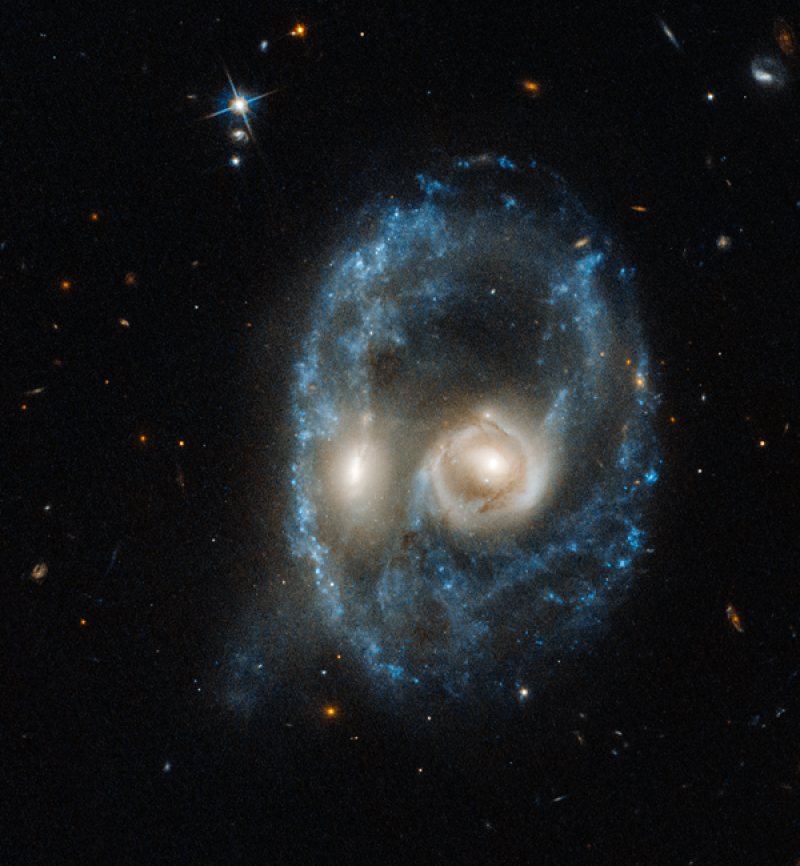
Galaxies in our universe grow and evolve through collisions. When they smash together, galaxies distort and change as gravitational effects spark new star formation and feed supermassive black holes. The entire process can even bind the parties involved into a new, bigger galaxy that may bear no resemblance to the pieces that built it.
Most collisions aren’t head on — but Arp–Madore 2026–424 didn’t get the memo. In June, the Hubble Space Telescope captured a visible-light snapshot of this cosmic smash-up in progress, which has twisted a pair of galaxies into what almost resembles a ghostly face. The central regions, or bulges, of the galaxies involved glow brightly like a pair of supernatural eyes. They appear evenly matched, a sign that the two galaxies are roughly the same size. Gas, dust, and stars that have been yanked the galaxies by the merger now form a huge, bluish ring structure that serves as the head and nose.
Ring structures like this don’t last long, cosmically speaking — only about 100 million years. So, Hubble’s snapshot captures a unique and fleeting moment in time; as the merger between the galaxies progresses, the face will distort into unrecognizability. In about 1 to 2 billion years, the two galaxies will have merged completely into a new galaxy altogether.
Ring structures like this don’t last long, cosmically speaking — only about 100 million years. So, Hubble’s snapshot captures a unique and fleeting moment in time; as the merger between the galaxies progresses, the face will distort into unrecognizability. In about 1 to 2 billion years, the two galaxies will have merged completely into a new galaxy altogether.